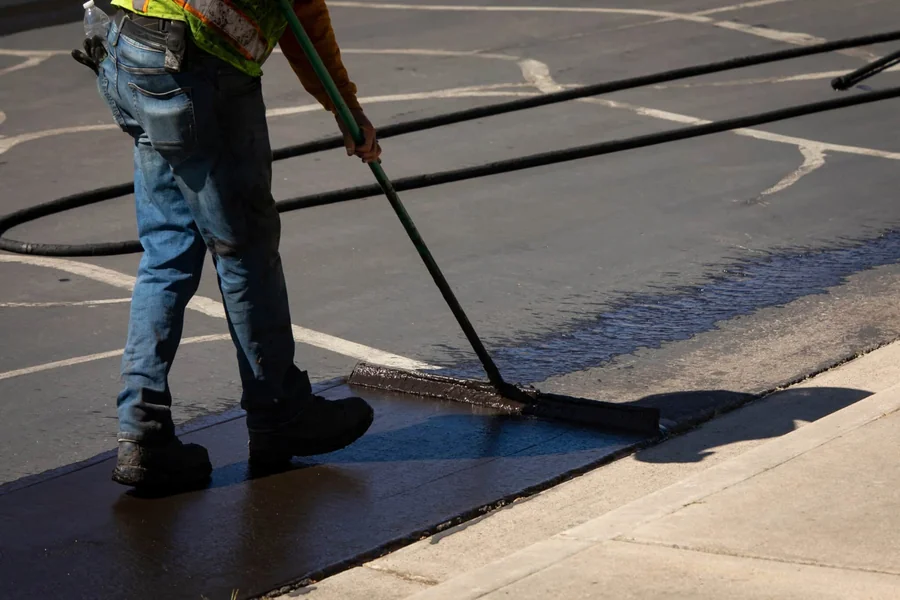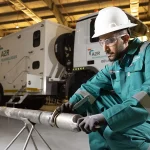Key Takeaways
- Consistent asphalt maintenance is a practical strategy to prevent expensive repairs and extend surface life.
- Effective preservation techniques such as crack sealing, sealcoating, and proactive inspections can address common issues before they escalate.
- Research and industry standards highlight that preventative maintenance can yield significant cost savings over time.
- Implementing an annual maintenance schedule aids in spotting minor wear quickly, reducing the risk of significant damage.
- Smart repairs and green-friendly products are trending in modern asphalt care.
Why Asphalt Deteriorates Over Time
Asphalt surfaces are constantly exposed to harsh elements and heavy traffic loads. Weather conditions like heavy rain, freezing temperatures, snow, and intense sunlight contribute to surface breakdown. Over time, water infiltration causes base materials to erode, leading to significant structural weakness. Traffic from large vehicles accelerates wear, causing small cracks that expand if not treated quickly for property owners. Deering maintenance results in rapid deterioration, transforming minor issues into costly, large-scale repairs. Choosing professional services such as parking lot paving La Porte IN ensures early problems are spotted and resolved before they escalate.
Industry experts highlight the stark difference between proactive and reactive repair models. Preventive maintenance addresses vulnerabilities before they cause widespread failure, while reactive repairs often involve higher costs and more extensive downtime. According to Asphalt Magazine, a proactive approach offers long-term protection for commercial and residential properties.
The Economics of Preventive Maintenance
The financial impact of regular asphalt care is clear when comparing ongoing maintenance to full-depth repairs or total surface replacement. Minor maintenance costs—such as annual crack filling or sealcoating—are significantly less expensive than fixing large potholes or replacing the entire pavement layer. When repairs are timely and systematic, asphalt longevity increases and total lifecycle costs decline dramatically.
Real-world examples reinforce the savings realized through regular inspections and repairs. For instance, municipalities that embrace proactive maintenance can save up to 30-40% in long-term expenses, according to the Federal Highway Administration. Businesses that put off essential maintenance often face steeper bills for extensive restoration or even unexpected liability from trip hazards and pothole damage.
Core Maintenance Strategies for Longevity
Comprehensive asphalt maintenance starts with simple yet effective tasks such as routine cleaning and debris removal. Preventing leaves, dirt, and stormwater from accumulating reduces surface wear and drainage problems. Regular professional inspections can detect subtle indicators of trouble, such as hairline cracks or minor settling, which are often invisible to the untrained eye.
Key techniques for preserving surface integrity include crack filling (to block moisture intrusion), sealcoating (to restore UV protection), patching damaged areas, and resurfacing as surfaces age. Hiring professional contractors ensures that the materials and methods are up to industry standards and tailored to the pavement’s needs.
Seasonal Considerations and Climate Impact
Regional weather patterns play a pivotal role in asphalt maintenance decisions. In areas prone to freeze-thaw cycles, water trapped in small cracks expands as it freezes, rapidly enlarging minor flaws into major fissures and potholes. Timely crack sealing and sealcoating before winter hits are essential preventive measures. In hotter climates, UV rays and thermal expansion can cause asphalt to dry and crack, demanding a different scheduling approach.
The optimal timing of care—such as scheduling repairs in temperate months rather than during extreme cold or heat—directly impacts the success and longevity of maintenance efforts. Local climate data and experienced contractors are key resources for property owners devising their annual care schedule. For more advice on adapting maintenance to your region, consider insights from Family Handyman.
Innovative Approaches and Materials
Modern asphalt care increasingly emphasizes environmental responsibility and advanced monitoring. Eco-friendly sealants, made with fewer solvents and recycled materials, reduce the carbon footprint of maintenance without sacrificing performance. Recycled asphalt products are also gaining popularity for their cost benefits and positive environmental impact.
Digital inspection tools, drones, and smart sensors are now being used to assess pavement condition in real time. These innovations enable precise detection of early wear, allowing targeted repairs that minimize disruption and expense while extending the usable life of the surface.
Building a Proactive Maintenance Calendar
The foundation of effective maintenance is a clear, actionable yearly schedule. Begin by documenting the condition of your asphalt, noting trouble spots and improvement opportunities. Plan routine cleaning and inspections each season, and schedule professional services—like crack sealing in spring and sealcoating before winter—as needed.
- Monthly: Sweep debris and check for drainage issues.
- Quarterly: Inspect for cracks, settling, and surface wear.
- Annually: Plan for sealcoating and review overall condition with a qualified contractor.
Adhering to this calendar ensures timely attention to every stage of your asphalt’s lifecycle, reducing the risk of emergency repairs and costly replacements.
Common Mistakes That Lead to Costly Repairs
Overlooking minor cracks, ignoring drainage problems, or delaying routine sealcoating often leads to rapid expansion of damage. Without timely intervention, minor imperfections allow moisture to penetrate the pavement, accelerating deterioration. Sealcoating less frequently than recommended puts the entire surface at risk for oxidation and brittleness.
Property owners should avoid cutting corners using low-quality products or unqualified contractors, as these shortcuts typically result in premature surface failure. Preventing mistakes through professional guidance protects both your investment and the environment.
Frequently Asked Questions on Asphalt Maintenance
How often should I inspect my asphalt?
Experts recommend inspecting asphalt surfaces at least every quarter, with a thorough annual review by a licensed professional.
Is sealcoating necessary, and how frequently?
Yes, sealcoating protects against UV and water damage. Most surfaces benefit from sealcoating every 2–3 years, depending on traffic and climate.
Are there new trends in asphalt maintenance?
Technological developments like digital monitoring and a greater focus on eco-friendly materials are transforming the industry in 2024. These approaches combine sustainability with cost savings and are increasingly adopted in commercial and residential projects.
Should I hire professionals or attempt maintenance myself?
While property owners can manage routine cleaning, advanced maintenance requires skilled contractors for optimal results and long-lasting protection.
Consistent care helps extend the lifespan of paved surfaces, preventing small cracks from developing into major structural issues. By addressing minor wear early, property owners save significantly on costly repairs while ensuring safety and curb appeal. Proactive upkeep ultimately proves far more economical than reactive, large-scale restoration efforts.







